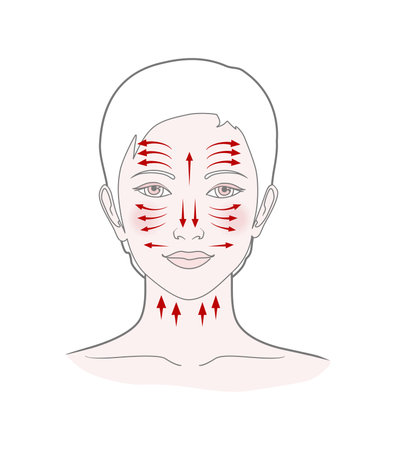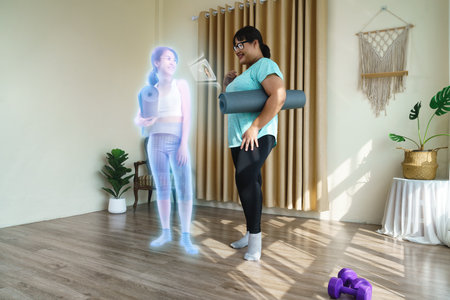1. Introduction to Patient-Centered Care in Orthopedic Rehabilitation
Patient-centered care is a key approach in today’s U.S. healthcare system, especially for orthopedic ankle and knee rehabilitation. This model focuses on treating each patient as a unique individual, not just a set of symptoms or injuries. In orthopedic rehab, this means listening to patients’ goals, respecting their values, and involving them in decisions about their care plans.
What Is Patient-Centered Care?
Patient-centered care puts the patient at the heart of all medical decisions. Instead of a one-size-fits-all method, it aims to understand each person’s lifestyle, concerns, and rehabilitation goals. In the context of ankle and knee rehab, this can include:
- Personalizing treatment plans
- Encouraging open communication between patients and their care team
- Supporting shared decision-making
- Respecting cultural backgrounds and preferences
Why Is Patient-Centered Care Important in Orthopedic Ankle and Knee Rehabilitation?
Orthopedic injuries like ankle sprains or knee surgeries can affect daily life, work, and hobbies. A patient-centered approach ensures that recovery plans fit each person’s needs and priorities. For example, an athlete may want to return to sports quickly, while an older adult might focus on walking safely at home. By understanding these different goals, therapists can design more effective rehab programs.
Key Principles of Patient-Centered Care
| Principle | Description | Example in Rehab |
|---|---|---|
| Respect for Patients’ Values | Acknowledge individual preferences and needs | Selecting exercises that match a patients comfort level or cultural beliefs |
| Information Sharing | Keep patients informed about their condition and treatment options | Explaining the purpose of every exercise or therapy session |
| Collaboration and Teamwork | Include patients in making decisions with healthcare providers | Letting patients choose between different therapy techniques based on their goals |
| Emotional Support | Address fears or anxieties related to injury or recovery | Counseling patients through setbacks or slow progress during rehab |
| Continuity of Care | Smooth transitions between hospital, outpatient therapy, and home exercises | Providing clear home exercise instructions after discharge from physical therapy clinic |
The U.S. Healthcare System’s Role in Patient-Centered Orthopedic Rehab
The American healthcare system increasingly encourages providers to adopt patient-centered models. Insurance companies and hospitals often measure success by patient satisfaction and functional outcomes, not just how quickly someone recovers physically. By focusing on what matters most to each patient—whether it’s running marathons again or being able to play with grandchildren—orthopedic teams can help people achieve meaningful results in their ankle and knee rehabilitation journey.
2. Collaborative Goal Setting Between Patients and Care Teams
Why Collaborative Goal Setting Matters in Orthopedic Rehabilitation
When recovering from ankle or knee injuries, every patient’s journey is unique. Patient-centered care models focus on collaboration between patients and their care teams, making sure that treatment plans reflect each person’s goals, lifestyle, and cultural background. Working together helps build trust, increases motivation, and leads to better outcomes.
Strategies for Effective Communication
- Active Listening: Providers ask open-ended questions and pay close attention to what patients say about their pain, goals, and concerns.
- Cultural Sensitivity: Care teams respect cultural differences, language preferences, and family involvement in decision-making.
- Accessible Language: Medical jargon is replaced with simple explanations to make information easy to understand for everyone.
Shared Decision-Making: Putting Patients in the Driver’s Seat
Shared decision-making empowers patients to participate in their own care. It involves discussing all treatment options—including physical therapy, bracing, surgery, or home exercises—so patients can make choices that fit their values and daily routines.
Steps in Shared Decision-Making
| Step | Description |
|---|---|
| Information Sharing | The care team explains diagnoses, options, risks, and benefits clearly. |
| Patient Preferences | Patients share their personal goals, daily challenges, and any cultural or family needs. |
| Discussion & Agreement | Together, the team reviews options and agrees on a plan that suits the patient best. |
| Follow-Up | The team checks in regularly to adjust goals as recovery progresses. |
Personalized Goal Setting for Diverse Needs
No two patients are alike. Some may want to get back to work quickly; others might prioritize playing with their kids or returning to sports. By setting personalized goals, the care team ensures rehab plans are meaningful and motivating for each individual.
Examples of Personalized Goals in Ankle and Knee Rehab
- Returning to Work: Gradually increasing standing or walking tolerance for those with physically demanding jobs.
- Daily Activities: Regaining the ability to climb stairs, drive, or shop independently.
- Cultural Practices: Addressing specific movements needed for religious or family activities.
- Athletic Goals: Developing sport-specific exercises for athletes aiming to return to play safely.
This collaborative approach ensures that every patient’s voice is heard and their recovery journey is tailored just for them.

3. Interdisciplinary Approaches to Rehabilitation
The Power of a Team-Based Model in Orthopedic Care
Orthopedic ankle and knee rehabilitation is most effective when it uses an interdisciplinary approach. In the United States, this means that care is not just given by one specialist but rather by a whole team working together with the patient at the center. Each professional brings unique skills to support recovery and improve quality of life.
Key Members of the Rehabilitation Team
| Team Member | Main Role in Rehabilitation |
|---|---|
| Physical Therapist (PT) | Designs and leads exercise programs, helps restore mobility, and educates on safe movement |
| Orthopedic Surgeon | Performs surgeries, provides post-operative care, and creates medical treatment plans |
| Nurse | Monitors healing, manages pain, and gives medication or wound care instructions |
| Occupational Therapist (OT) | Assists with daily activities and adapts home/work environments for safety and independence |
| Case Manager or Care Coordinator | Helps organize appointments, insurance paperwork, and communication between providers |
| Patient & Family Members | Actively participate in decisions, follow through with home programs, and offer emotional support |
How Collaboration Works in Practice
For example, after an ACL reconstruction surgery, an orthopedic surgeon sets medical guidelines while a physical therapist builds a personalized rehab plan. Nurses check progress during follow-ups and manage any complications. Occupational therapists may step in if the patient has trouble returning to work or everyday tasks. Regular team meetings—sometimes called “care conferences”—keep everyone on the same page about goals and updates.
The Patient’s Voice Matters Most
A true patient-centered model always values what matters to the individual. American clinics encourage patients to share their personal goals—like walking a child down the aisle or returning to sports—so that each discipline can adjust their approach. This partnership builds trust and often speeds up recovery.
4. Integrating Technology and Home-Based Care
Embracing Digital Health in Orthopedic Rehabilitation
In the U.S., digital health tools are changing the way patients recover from ankle and knee injuries. Patient-centered care models now often include telehealth visits, wearable devices, and home exercise programs. These tools help patients stay engaged and manage their rehab journey with more independence.
Telehealth: Connecting Patients and Providers
Telehealth has become a popular choice for follow-up appointments and physical therapy check-ins. Through video calls, patients can connect with their care teams without leaving home. This saves time, makes access easier—especially for those in rural areas—and allows therapists to guide exercises or adjust treatment plans in real time.
Benefits of Telehealth in Rehab
| Benefit | Description |
|---|---|
| Convenience | No need to travel for every appointment |
| Accessibility | Connect with specialists regardless of location |
| Continuity of Care | Regular check-ins help track progress and address concerns quickly |
Wearable Devices: Tracking Progress at Home
Wearables like smartwatches, activity trackers, and sensors are increasingly used in orthopedic rehab. These devices can monitor steps, range of motion, heart rate, and even remind patients when it’s time to do their exercises. The data collected helps both patients and providers see real-time progress and spot any issues early on.
Common Wearable Features for Rehab Patients
| Feature | How It Helps |
|---|---|
| Step Counting | Keeps track of daily mobility goals |
| Movement Sensors | Measures joint angles during exercises or walking |
| Reminders/Alerts | Nudges patients to stay on schedule with their rehab routines |
| Progress Tracking Apps | Makes it easy to share results with therapists remotely |
Home Exercise Programs: Supporting Self-Management
A big part of patient-centered care is giving people the tools they need to take charge of their own recovery. Customized home exercise programs (HEPs) are now often delivered through apps or online portals. These platforms provide video demonstrations, step-by-step instructions, and allow users to log their workouts—making it simple to stick with the plan between clinic visits.
The Advantages of Digital Home Exercise Programs:
- User-Friendly: Clear videos and instructions make exercises easy to understand.
- Motivational Tools: Progress bars, goal setting, and reminders keep patients motivated.
- Personalization: Exercises can be adjusted based on each patient’s needs and recovery speed.
- Communication: Built-in messaging lets patients ask questions or send updates directly to their provider.
By integrating these technologies into orthopedic ankle and knee rehabilitation, care teams can deliver more flexible, accessible, and personalized support. This approach not only meets U.S. trends toward digital health innovation but also empowers patients to be active partners in their healing process.
5. Measuring Outcomes and Ensuring Continuous Improvement
The Role of Outcome Tracking in Patient-Centered Care
In orthopedic ankle and knee rehabilitation, measuring outcomes is essential to ensure that patient-centered care models are truly working for each individual. This means not only looking at how well patients heal physically, but also focusing on their personal goals, satisfaction with care, and overall progress during recovery.
Why Patient-Reported Outcomes Matter
Patient-reported outcomes (PROs) are the feedback patients give about their own health, symptoms, function, and quality of life after treatment. These insights help therapists and doctors tailor rehab programs based on what matters most to each person. For example, if a patient values returning to sports or being able to walk pain-free with their family, tracking their experiences can guide therapy decisions.
Common Patient-Reported Outcomes Used in Orthopedic Rehab
| Outcome Measure | Description | Example Questions |
|---|---|---|
| Pain Levels (e.g., Numeric Pain Rating Scale) | Tracks changes in pain intensity over time | “On a scale from 0-10, how would you rate your pain today?” |
| Functional Ability (e.g., KOOS/FAAM) | Assesses daily activities, sports participation, and quality of movement | “Can you climb stairs without assistance?” “Are you able to run or jump?” |
| Satisfaction Surveys | Measures how satisfied patients feel about their care and recovery process | “How would you rate the communication with your rehab team?” |
| Goal Achievement Scales | Evaluates progress toward personal recovery goals set by the patient | “Have you returned to work or hobbies as planned?” |
Tracking Functional Progress Over Time
Regularly checking in on how well a patient can move, perform daily tasks, and participate in desired activities is crucial for continuous improvement. Therapists often use simple tests—like walking speed, balance checks, or strength assessments—to see real-world progress. This data helps adjust rehab plans so they stay relevant and effective as the patient heals.
Examples of Functional Progress Measures
- TUG Test (Timed Up and Go): Measures speed and safety when standing up, walking a short distance, and sitting down again.
- Single-Leg Balance: Checks stability and strength on each leg.
- Knee Flexion/Extension Range: Assesses joint flexibility after surgery or injury.
- Ankle Dorsiflexion: Looks at how far the ankle can bend upward—important for walking and climbing stairs.
Using Feedback to Improve Rehabilitation Models
The best rehab programs listen closely to patient feedback and outcome data. If many patients report slow progress or dissatisfaction with a certain exercise plan, therapists can quickly adapt their approach. This ongoing adjustment creates a more responsive model that respects each patients needs, background, and lifestyle—core values in American healthcare culture.


